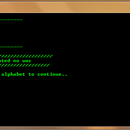Introduction: Robotic Arm for Disabled Persons
Robotic arm in stats
A mechanical arm is robotic, usually programmable, with similar functions to a human arm. The links of such a manipulator are connected by joints allowing either rotational motion (such as in an articulated robot) or translational (linear) displacement. The links of the manipulator can be considered to form a kinematic chain. The business end of the kinematic chain of the manipulator is called the end effector and it is analogous to the human hand. The end effector can be designed to perform any desired task such as welding, gripping, spinning etc., depending on the application. My idea is to make a robotic arm which works on slightly movement of muscles for disabled persons to fulfill the duty to assist in the daily activities likes playing chess with friends
or drinking water.In this project i have used motors that is operated by sensors which will work on the movement muscles of hand.The only goal of the project is to integrate into society and improve the quality of life of persons with disabilities.
"The future belongs to those who believe in the beauty of their dreams."
Step 1: Hypothesis
Step 2: Research
I have figured out that many people or soldiers have lost their arm or limbs in wars or in accidents or in moving traps, as we know that we can't grow our arm once again like starfish we have to create a such a device that acts like a human arm that is controlled with the power of mind. Recently,Pentagon-backed scientists are getting ready to test thought-controlled prosthetic arms on human subjects, by rewiring their brains to fully integrate the artificial limbs. I have got information that about a seven year ago Tim Hemmes, who was paralysed in a motorcycle accident seven years ago, is the first participant in a clinical trial testing a brain implant that directs movement of an external device. Neurosurgeons at the University of Pittsburgh School of Medicine in Pennsylvania implanted a grid of electrodes, about the size of a large postage stamp, on top of Hemmes's brain over an area of neurons that fire when he imagines moving his right arm. They threaded wires from the implant underneath the skin of his neck and pulled the ends out of his body near his chest.The team then connected the implant to a computer that converts specific brainwaves into particular actions.
Likewise I am thinking to develop a robotic arm controlled by muscle power that will be wired by sensors and control the robotic arm. I am researching the easier ways to operate the arm for disabled persons.
Step 3: Create
In robotic arm there are four important parts named as-:
· Bottle <to attach arm and cutted portion>
· Elbow motor <to operate movement of elbow>
· Wrist motor <to operate movement of fingers>
· Sensors <to control robotic arm with movement of muscles>
Bottle: - It is used to join the robotic arm to cutted portion .I researched that bottle shape is perfect shape to join cutted portion
Elbow motor: - Elbow motor is used to perform work of elbow. I researched that elbow motor needs to be more powerful to work with weight of wrist motor, second supporting road and the object we are picking..
Wrist motor: - Wrist motor was trick for me because to perform the actions of figure is very hard. I found two grippers while researching which were useful. First gripper was capable to pick up any type of kitchen objects like picking up cup to drink tea. Second griper is designed and made by me that can pick up small objects like ball, pencils, pens etc…
Sensors: - To found movement sensors in market is very hard to found in my city so created my own sensors that are worked by the movement of figures of legs. Due to shortage of time I didn’t connected sensors to the arm. Arm is operated by click of button.
This sensor really works, but i have not connected to the arm but i have tested it on light.
How it works?
As you are seeing in above picture there is above blue type of thing.It has two poles it is connected to finger, little down there is a aluminum foil. When you lift up your thumb two poles get connected and net work is completed. SIMPLE...
REAL PROJECT OVERVIEW..
Step 4: Observation
I observed that elbow motor needs to be more powerful to work with weight of wrist motor, second supporting road and the object we are picking. And wrist is also not capable to grip heavy objects. Wrist must be developed because wrist is flexible it can grip and the whole wrist can move in human its very difficult to put in robotic arm. More advanced sensors is needed to operate the arm. Another challenging is to make it in light weight i have made the arm with using steel pates and some parts Mecanics ,it will be more lighter by using fiber. It was very difficult build arm in very short time. I will not live this challenge until i am succeed....
Step 5: References
My idea was to make a robotic arm which works on slightly movement of muscles for disabled persons to fulfill the duty to assist in the daily activities likes playing chess with friends etc..The only goal of the project is to integrate into society and improve the quality of life of persons with disabilities.

Participated in the
Hack It! Contest













